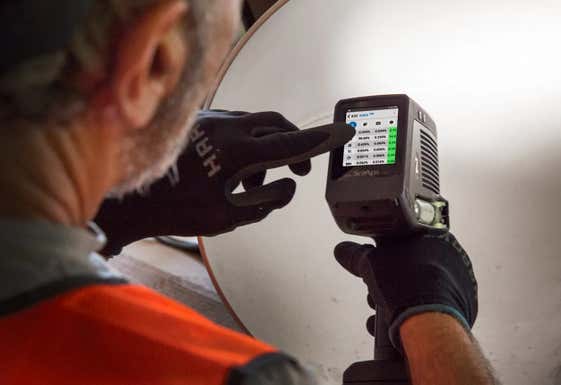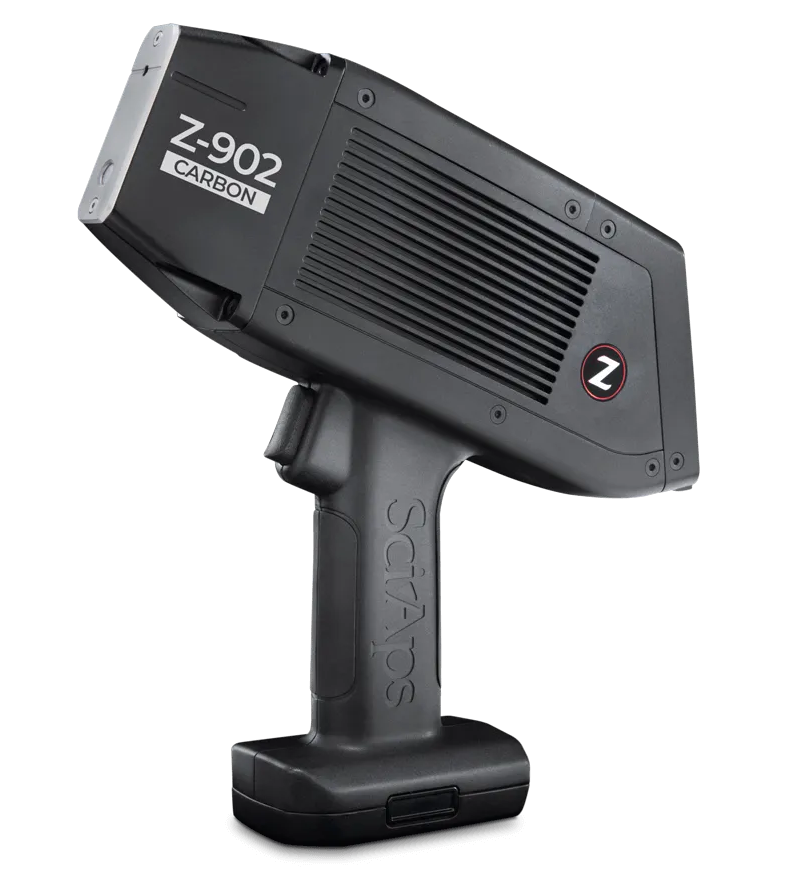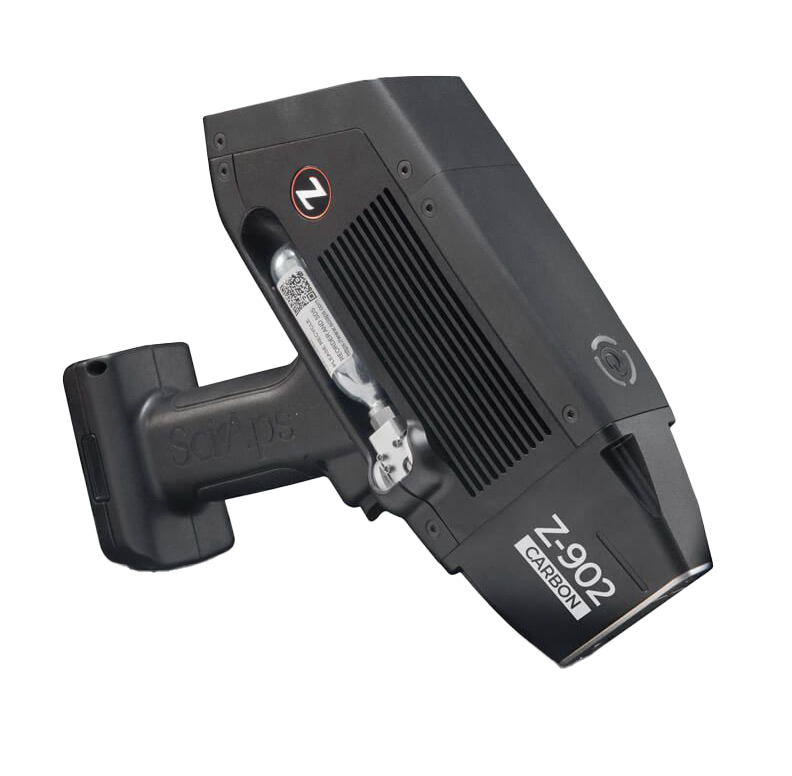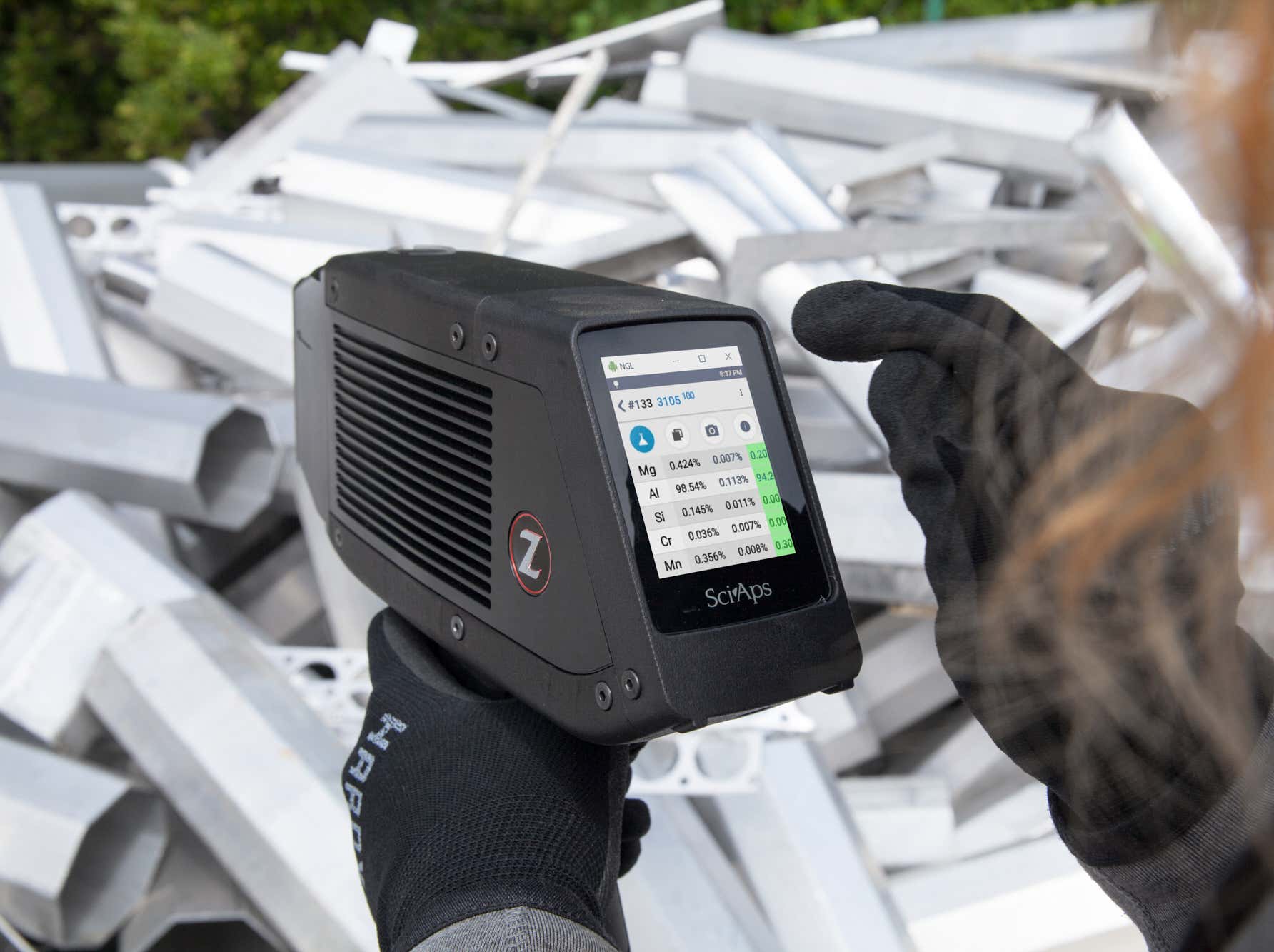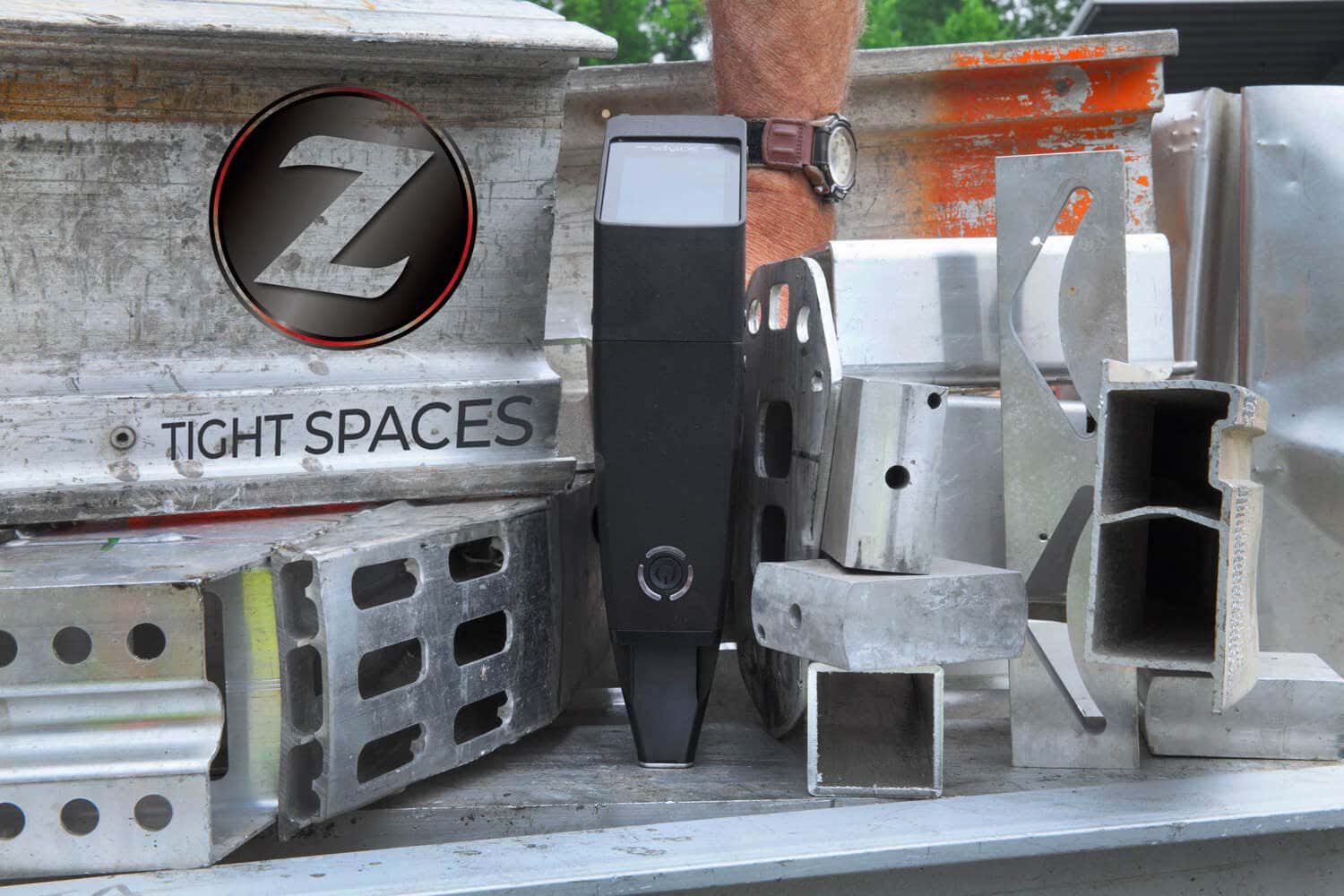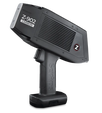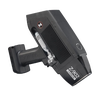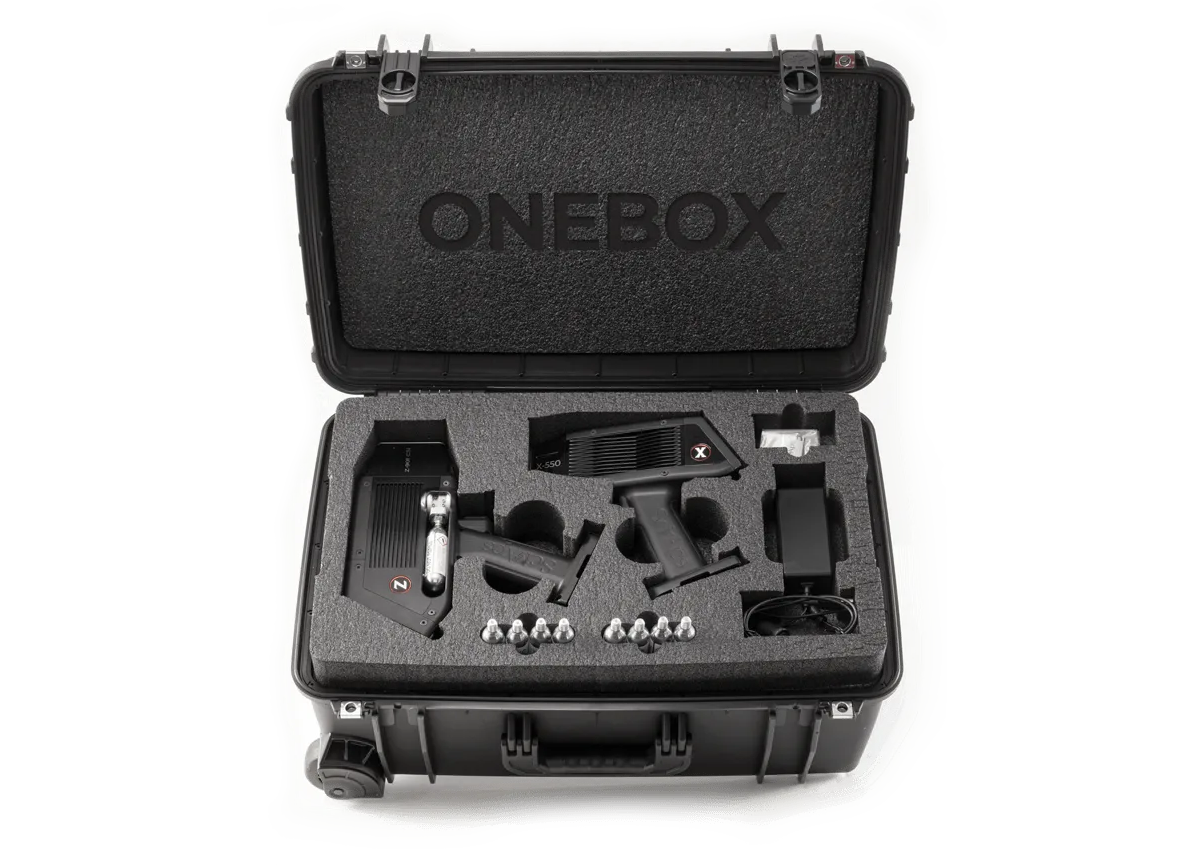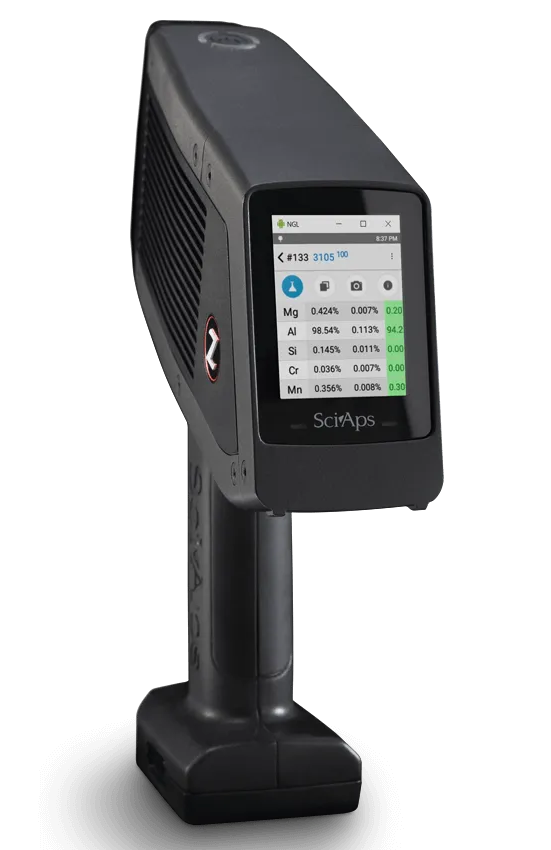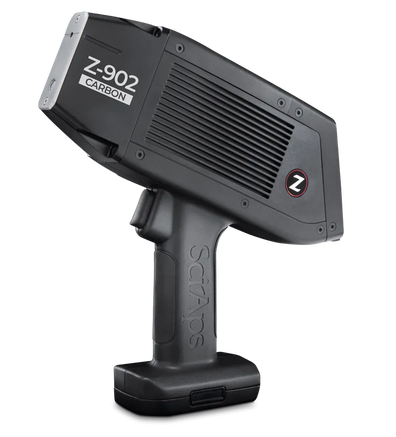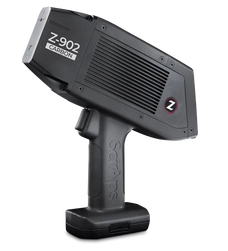A powerful combination: SciAps is a Malvern Panalytical company

Meet the Z-902 +
The SciAps Z-902 + handheld LIBS analyzer features an all-new ergonomic design, a 0.5 lb. weight reduction down to ~3.5 lbs. (1.6 kg), improved heat dissipation, and updated software and processing electronics.
The Z-902 + can use on-board argon purge for high precision analysis or QuickSort for rapid material sorting or grade identification with air-burn. Depending on the element, the LIBS signal is 2-10x higher when operating in argon purge versus air-burn.
The analyzer uses two spectrometers to extend the wavelength range to 190-620 nm. The instrument is factory calibrated for a suite of 15-20 elements, depending on the application. Operators may use the accompanying Profile Builder software package to customize it to specific elements, their own calibration standards, and spectral processing.
The Z-902 + can be set up to measure the emissions of any element. Common factory-calibrated Z-902 + applications include alloy and aluminum.
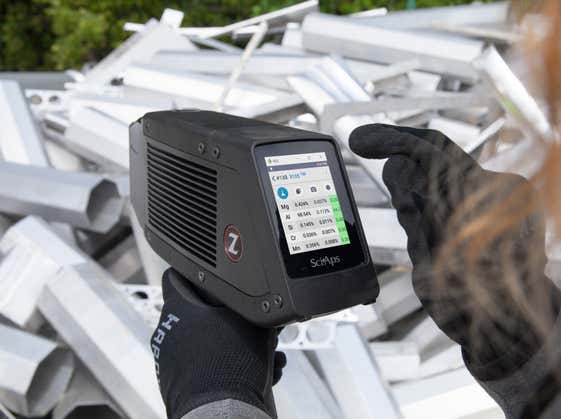
Alloy analysis
The Z-902 software allows you to choose between fast and basic QuickSort, or high-precision Alloy.
-
- QuickSort
-
Air-burn for rapid material sorting or grade identification.
- Alloy
-
- Argon-purge for high precision and improved detection limits
- Many customers use argon-purge to analyze and sell mill-ready aluminum scrap
The Z-902 + for alloy analysis measures 15-20 elements in 7 common alloy bases, including aluminum, stainless, iron, copper, titanium, nickel and cobalt bases. Other bases may be added for a small fee, or users may add their own calibrations.
- Need to measure carbon in steels and stainless, including verifying L- and H-grade stainless? Use SciAps Z-902 Carbon, in use globally for measuring carbon and other elements in steels, stainless and nickel alloys.
- Already own handheld XRF, and only need to add carbon measurements? Use Z-901 CSi, the ultra-compact analyzer that measures C and Si in steels, stainless.
